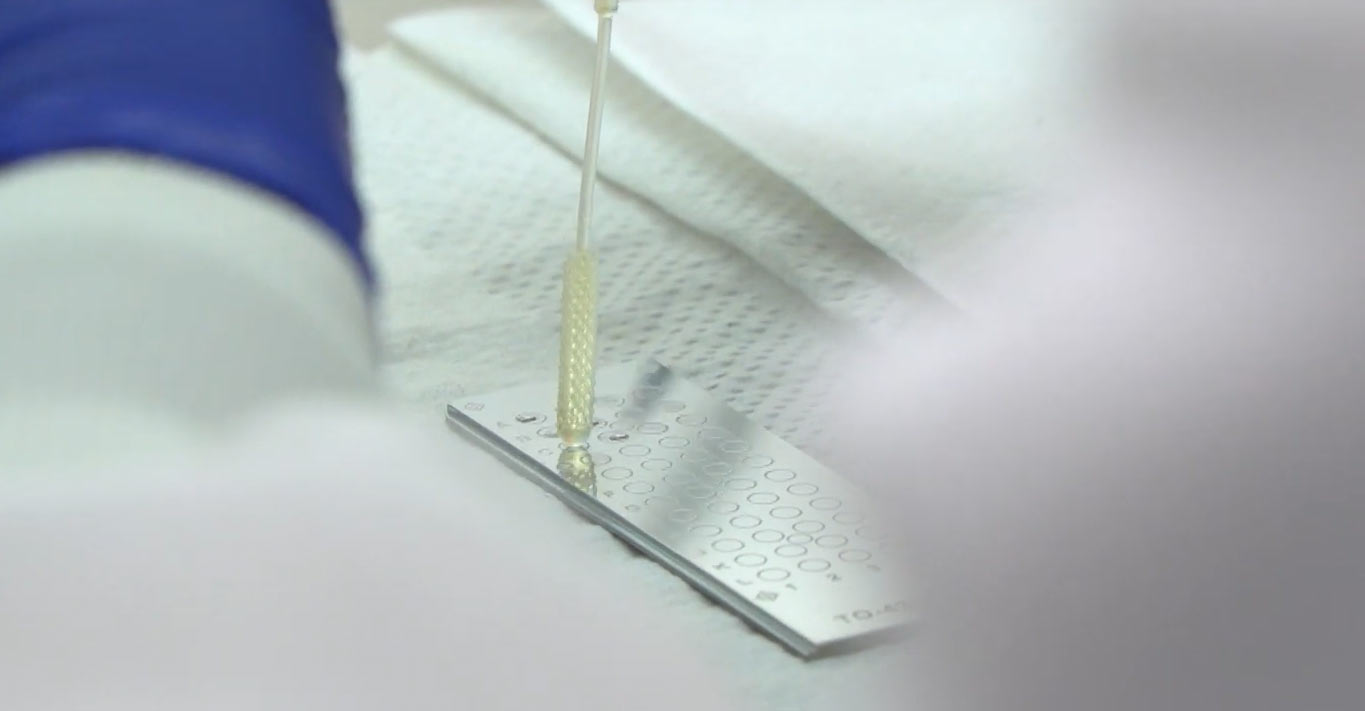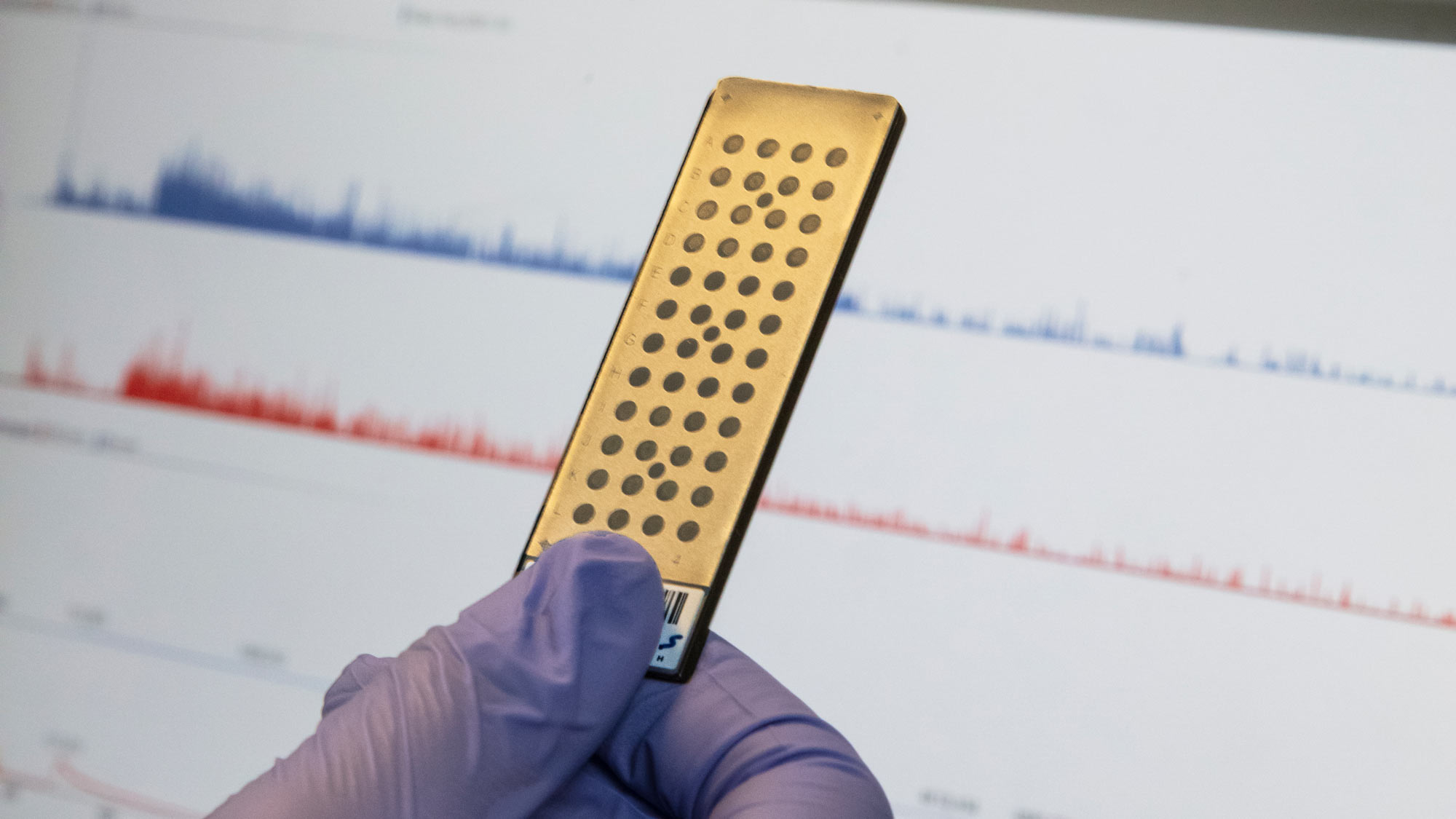Quick Summary
- Allegiant Travel chairman sponsors research on automated, rapid test
- Described as critical to the economy and allowing people to gather again
- Gallagher aims to deploy the test through his SpectraPass startup
A partnership between UC Davis and Maurice J. Gallagher Jr., chairman and CEO of Allegiant Travel Company, has led to a new rapid COVID-19 test.
A recent study published Nature Scientific Reports shows the novel method to be 98.3 percent accurate for positive COVID-19 tests and 96 percent accurate for negative tests.
“This test was made from the ground up,” said Nam Tran, lead author for the study and a professor of pathology in the School of Medicine. “Nothing like this test ever existed. We were starting with a clean slate.”
The accuracy matches or outperforms many of the current COVID-19 screening tests. The new testing method may allow for the rapid screening of large numbers of individuals for businesses, schools, venues and other large facilities.
The project originated with Gallagher, a UC Davis alumnus and a longtime supporter of innovation and entrepreneurship at the university. He is the “Gallagher” of Gallagher Hall, home of the Graduate School of Management.
Last year, when the pandemic brought the airline and hospitality industries almost to a standstill, he began conceptualizing approaches that would allow people to gather again safely.
The GSM connection
Gallagher approached GSM Dean H. Rao Unnava, who connected him with Tran at the School of Medicine. Out of this came a sponsored research agreement between Gallagher and UC Davis, with support from Shimadzu Scientific Instruments, to develop an automated COVID-19 test on a mass spectrometer, an essential analytic tool used by a wide variety of industries for research and testing.
This is the first test for COVID-19 that pairs mass spectrometry with robotics and a robust automated machine learning platform to rapidly deliver test results. The coupling of these unique elements not only allows testing for COVID-19 but may be able to quickly adapt to detect other diseases and perhaps future pandemic organisms.
“Mr. Gallagher, through his generosity as an alum, has shown how business and universities can work together in solving problems of critical importance to the world,” Unnava said. “I am glad that this groundbreaking work will continue to build on the reputation of UC Davis as a place where you always ‘Expect Greater.’”
The collaboration is part of the School of Medicine’s new Center for Diagnostic Innovation.
“This game-changing, rapid new COVID-19 test speaks to the deep expertise of our faculty and scientists to find novel solutions to pressing global health challenges,” said Allison Brashear, dean of the School of Medicine. “It’s this kind of innovation and collaboration that has been the hallmark of our response to the pandemic.”
To ensure support for the study’s analytic portion, Tran enlisted Hooman Rashidi, a longtime collaborator and a professor in the Department of Pathology and Laboratory Medicine.

Machine learning
The machine, a mass spectrometer MALDI-TOF, or matrix-assisted laser desorption/ionization time-of-flight, uses a laser to create small particles — ions — from large molecules in the testing sample. These ionized particles create signals that can be used to identify many compounds, including those associated with microorganisms and pathogens.
For the study, researchers used the Shimadzu 8020 to ionize 226 nasal swabs from UC Davis’ biorepository of COVID-19 tests. Some of the swabs had been left over, others came from volunteers who consented to the study. Some of the participants had COVID-19 symptoms and some were asymptomatic.
Then came machine learning, a subset of artificial intelligence, to analyze the hundreds of peaks and signals produced by the ionized test swabs. The study used the automated machine learning platform MILO, or Machine Intelligence Learning Optimizer, co-developed by Tran, Rashidi and Samer Albahra, which has been used previously to predict severe infections and acute kidney disease.

For the COVID-19 test, MILO finds distinguishing patterns among the many mass spectrometry peaks and signals and deciphers which patterns correspond to the presence or absence of the SARS-CoV-2 virus in the samples.
MILO accomplished the analysis in a fraction of the time that a non-automated machine-learning approach would have taken. “This meant drastically expediting the study without compromising any performance measures,” Rashidi said.
SpectraPass
Gallagher has launched a new startup, SpectraPass, to develop the rapid, automated system into a means to facilitate opening businesses and the economy.
Experts at UC Davis Health are helping guide the SpectraPass team through the scientific, machine learning and clinical steps needed to move the COVID-19 testing technology closer to emergency use authorization by the Food and Drug Administration.
“The COVID-19 pandemic not only brought the world’s commerce and travel to a halt – it also took away our fundamental human interaction, our freedom to be together,” Gallagher said.
“This project has resulted in a real breakthrough that can not only provide instant, accurate information about COVID infection, but can be an important part of addressing other viruses and even developing therapies. The excitement of working with the team at UC Davis is in knowing we are helping make sure our children and grandchildren are better equipped to deal with potential pandemics in the future.”

Aggie Square tie-in
The partnership exemplifies the goals of Aggie Square, which brings together the university, community and industry to connect and collaborate.
“As a top-tier research university known for its excellence and disciplinary breadth, UC Davis is exceptionally well-positioned to work with our industry partners on groundbreaking innovations that benefit society,” said Mary Croughan, provost and executive vice chancellor.
Additional authors: Taylor Howard, Julia Loegering, Brett Phinney and Michelle Salemi, UC Davis; Ryan Walsh, Shimadzu Scientific Instruments; and John Pepper, Allegiant Travel Company.
Media Resources
Lisa Howard is a senior public information officer at UC Davis Health and formerly worked in the Office of Research. Contact her by email or phone, 916-752-6394.